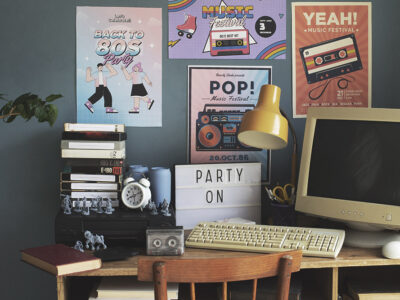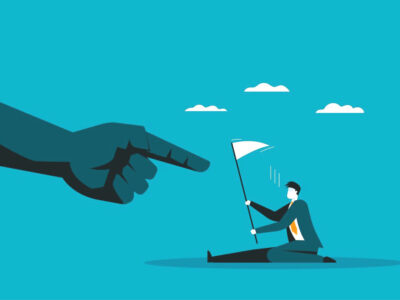Picture this: You’re deep into a work task when your phone buzzes with a text. You glance at it, reply quick, and then check email because why not? Before you know it, an hour has slipped away, and your to-do list looks the same as when you started. Sound familiar? What if you could reclaim those lost hours by simply cutting out distractions?
The good news is, boosting your productivity doesn’t mean grinding longer. It means working smarter. Think about deep work, that state where you dive in fully and get real results. This article shares simple steps to spot and stop distractions right now. You’ll walk away with tools to focus better and finish more today.
Take a moment. Pick one thing that pulls you off track most often. Commit to fixing it before you finish reading. Let’s get started.
Understanding the Impact of Distractions on Your Productivity
Distractions hit hard in our busy lives. They break your flow and make simple jobs take forever. Studies show we lose about 23 minutes each time we switch tasks, just to get back on track. That adds up fast.
Your brain craves focus, but constant pulls wear it down. This leads to stress and less output over time. To build a case, consider how attention works like a spotlight—it shines bright on one spot but dims when scattered.
Start by noticing this in your own day. Awareness is the first step to change.
The Hidden Cost of Constant Interruptions
Every ping or chat breaks your train of thought. Your mind needs time to refocus, and that gap costs energy. It’s like trying to read a book while someone flips the pages every few lines—you never get the full story.
The brain has limited power for attention. Interruptions overload it, raising mistakes and slowing you down. Over a day, these small hits steal hours you could use better.
Try this: Track interruptions for one full day. Jot down what pulls you away and how long it takes to return. You’ll see the real toll and feel ready to act.
Why Multitasking Is a Productivity Myth
You might think juggling tasks makes you efficient. In truth, it splits your focus and drops quality. Research from the American Psychological Association says task-switching can cut productivity by up to 40%.
Each switch adds mental overhead, like restarting a car engine over and over. You lose speed and fuel—here, that’s your time and brainpower. Stick to one thing, and you’ll finish faster with better results.
Test it out. Pick a task and focus for just 30 minutes, no switches. Compare that to your usual multitasking mess. The difference will surprise you.
Measuring Your Personal Distraction Levels
Know your weak spots before you fix them. Look at your phone’s screen time report or review your calendar for lost blocks. These tools show patterns, like too many app checks.
A quick audit reveals how much time slips through cracks. Maybe social media eats 45 minutes at lunch, or meetings drag without end. Numbers make the problem clear and motivate change.
Keep a distraction journal. Note each trigger, like a noisy room or worry thought, and how long it lasts. Review it weekly to spot trends and improve.

Identifying Common Distractions in Your Daily Routine
Spotting distractions starts with looking close at your habits. They hide in tech, spaces, and even your head. Once you name them, cutting them out gets easier.
Think of your day as a river. Distractions are rocks that block the flow. Clear them, and things move smooth. Self-check now—what’s your biggest pull?
This section breaks down the usual suspects. Use it to reflect and list your own.
Digital Distractions: Notifications and Social Media
Phone alerts light up like fireworks, demanding attention. A quick scroll on Instagram turns into 20 minutes gone. Email dings during focus time pull you into reply mode, away from key work.
These digital traps feed the attention economy, where apps fight for your eyes. In remote setups, it’s worse—your device is always near. Office folks face the same with shared screens or team chats.
Check your settings today. Turn off non-vital notifications, like social app pushes. Keep only must-know alerts, like from your boss. Feel the calm right away.
Environmental and Interpersonal Interruptions
Open offices buzz with talk and footsteps. At home, kids or pets add noise that scatters thoughts. Unplanned chats with coworkers can stretch a quick question into a long break.
These pulls come from your surroundings, hard to ignore. They break rhythm, especially in shared spaces. Remote workers might face family drop-ins or street sounds.
Set a clear boundary. Use a sign like “Focus Time” on your door or desk. Tell others you need quiet blocks. It respects your space and trains them to wait.
Internal Distractions: Mind Wandering and Procrastination
Your own thoughts can derail you most. Worries about bills pop up mid-task, or boredom makes you check the clock. Procrastination hits when a job feels tough, so you delay with easy stuff.
These come from inside, like a radio playing in your head. Stress amps them up, creating a loop of distraction. It’s common, but fixable with practice.
When your mind drifts, pause for a 5-minute reset. Breathe deep and name the thought, then let it go. Return to your task fresh. Build this habit to stay on track.

Practical Strategies to Eliminate Distractions
You’ve spotted the issues—now let’s fix them. These steps focus on quick wins you can try today. They build on what you know, turning insight into action.
No big overhauls needed. Small changes stack up for big gains. Ready to reclaim your day?
Start with one strategy per section. Watch your output soar.
Mastering Your Digital Environment
Tech can serve you, not rule you. Use built-in tools like Do Not Disturb on your phone during work hours. Block sites with apps like Freedom if scrolling tempts you.
Batch your checks—peek at email only at set times, say morning and afternoon. This cuts constant pulls and lets you dive deep. For social media, set app limits to 15 minutes a day.
Today, switch your phone to silent for your next focus block. Check messages in batches twice daily. You’ll notice sharper thoughts and faster finishes.
Building a Distraction-Free Workspace
Clear clutter first—messy desks feed chaos in your mind. Pick a spot just for work, away from TV or kitchen. Add noise-canceling headphones to block outside sounds.
Light and comfort matter too. Face a window for natural light, or use a lamp if needed. Keep temptations out of sight, like that bag of chips or extra phone.
Set up your zone now. Remove gadgets not in use and tidy surfaces. Enter this space only for tasks. It signals your brain: time to focus.
Leveraging Time Management Techniques
Time-blocking carves your day into chunks for single goals. Pick your top task, set a block like 9-10 AM, and guard it. This fights random pulls.
Try the Pomodoro method: Work 25 minutes straight, then break for 5. A timer keeps you honest and builds stamina. It’s simple but powerful for short bursts.
Grab a timer for your next job. Go 25 minutes no distractions, then step away brief. Repeat to build speed. You’ll get more done without burnout.

Cultivating Habits for Long-Term Focus
Quick fixes help today, but habits lock in gains. Build routines that make focus natural. Tie this to your daily flow for lasting change.
Think long-term: Consistent steps beat one-off tries. Your brain adapts, making deep work the norm.
Shift your mindset now. Small daily wins lead to big productivity boosts.
Developing Focus-Building Routines
Start mornings with a plan. List three key tasks before coffee—keeps distractions at bay. End days by prepping tomorrow, so you hit the ground running.
Rituals like a quiet walk or stretch warm up your mind. They clear mental fog and set intent. Over time, these anchor your focus.
Tonight, jot your top three for tomorrow. Review at day’s end. This simple loop cuts morning chaos and sharpens your edge.
The Role of Rest and Recovery in Sustained Productivity
Breaks aren’t lazy—they recharge your focus. Without them, distractions creep in from fatigue. Short rests break the cycle, like oiling a machine.
Sleep well and nap if needed; tired brains wander more. Walks outside reset attention better than staring at screens. Balance work with true downtime.
Plan a 10-minute break today, like a stroll. No phone—just breathe and move. Return sharper, ready to tackle more.
Accountability and Tracking Progress
Share goals with a friend or coworker. They check in, keeping you on path. Apps like Habitica turn tracking into a game.
Log wins weekly—what worked, what didn’t. Adjust as needed. This builds momentum and shows real change.
Tell one person your distraction goal today. Use a journal or app to note progress. Celebrate small steps; they’ll add up.

Conclusion
Cutting out distractions lets you reclaim your day and get more done. From spotting digital pings to building focus habits, these steps offer quick paths to better productivity. Implement them, and watch stress drop while output rises.
The payoff? Fuller days with less rush. You’ll finish tasks faster and feel in control. Start small for big shifts.
Key takeaways:
- Audit one digital distraction and shut it down today.
- Use time-blocking for your next work session.
- Build a daily focus routine to keep momentum going.
Act now. Pick a strategy, try it, and see the change. Your more productive life starts today.
Also read: Morning or Night: When Are You Most Productive?
Discover more from NoseyPepper
Subscribe to get the latest posts sent to your email.










Recent Comments